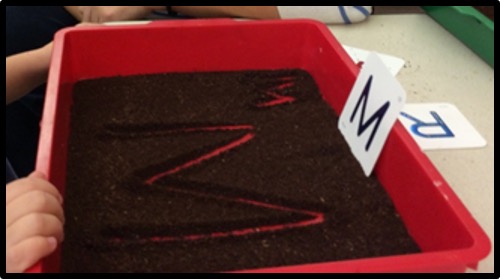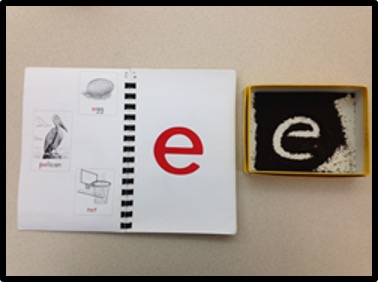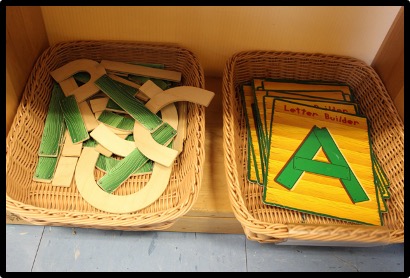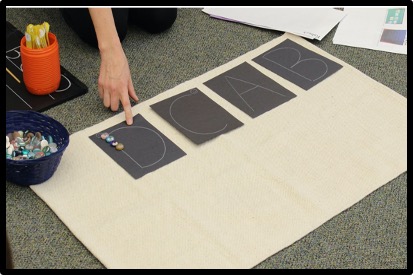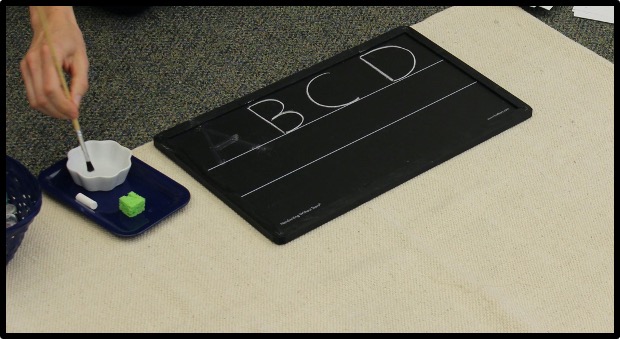Letters are Symbols: Introducing Symbols
A Note About Children’s Names
Handwriting Without Tears (HWT) introduces the upper case letters first, as theoretically the lines and shapes are easier for children to form. However, children’s names should be presented and written with an uppercase letter for the first letter, followed by lower case.
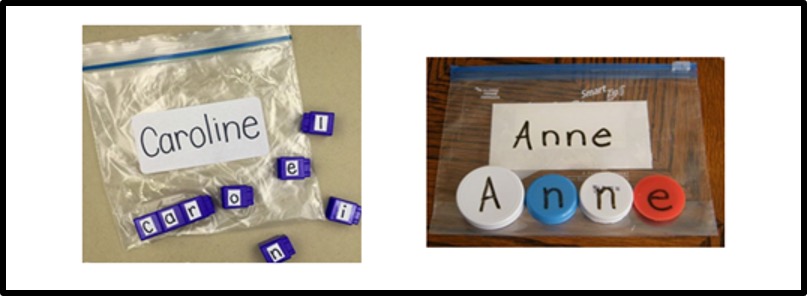
Mat Man activities are also upper case, but HWT recommends engaging in sorting games where children categorize upper and lower case letters as soon as possible. This way children can begin to practice the strokes for upper case, becoming successful writers, but learn that there are two kinds of each letter and they can write both.
Introducing Symbols Using Sandpaper Letters
Alphachant books introduce upper and lower case letters simultaneously and reinforce letter formation as each letter is introduced. You can begin with upper case letters for letter naming to align with HWT, moving quickly into sorting upper and lower case letter games. Sandpaper letters offer children a kinesthetic experience with the shape of the letter and a way to associate that shape with the name and sound of the letter. Presenting the letters in clusters helps children to see that letters do not exist in isolation, but rather in relation to other letters and the sounds they make. Choose clusters of letters that include a range of shapes and sounds, a vowel when possible, and follow that order. Alphachants has a particular order that you can follow.
Focus Letter Groupings (Alphachant order):
msf hta cpl gre dkn voj bwi zyq xu
Sandpaper Letters: 3 Period Lesson
The Three Period Lesson is actually a way to teach anything you want children to remember – colors, numbers, shapes, names of objects, etc. The Three Periods are:
- This is… (Tell the child what it is.)
- Show me…. (Ask child to find it giving them a verbal cue.)
- What is this? (Ask the children to identify it by name.)
First Period: This is…
- Choose 3 letters that are different in shape and sound.
- Place letter cards upside down in a pile to the left of the mat.
- Turn over a letter- Trace it with 2 fingers saying, “this is mmm.” OR “This is M, and the sound it makes is mmmmmm”
- Pass the letter to the child and have him/her trace the letter while you say the sound. Place that card face up on the mat.
- Turn over the next letter and repeat as above. Repeat again with the next letter.
- You may want to review the 3 letters and sounds again.
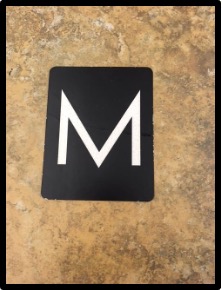
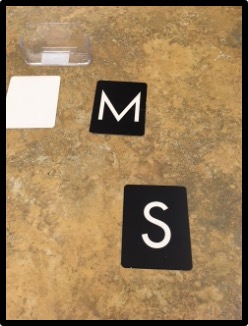
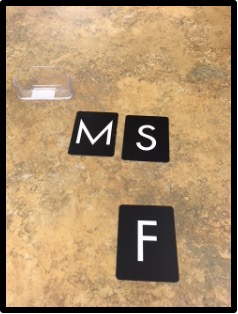
This is M and the sound it makes is ‘mmmm’. Move M to the top of the table or mat and repeat with the next letter. This is S and the sound it makes is ‘ssss’. This is F and the sound it makes is ‘ffff’.
The Second Period can get a bit tedious so mixing up the letters helps create novelty.
Second Period: Show me… (Ask child to show you the 3 letters you presented.)
“Okay, close your eyes and I am going to put the letters in order and give you a clue, and you show me the letter.”
Ask the child to close their eyes between each round. You may not do it all in one day. Most important is to ask the child to show you the letters in the same original order in which you taught the sound and name. After that, you can mix them up. See thee sequence below:
| Placement | Request |
|---|---|
| In order | In order |
| Out of order | In order |
| In order | Out of order |
| Out of order | Out of order |
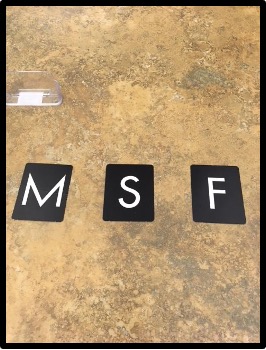
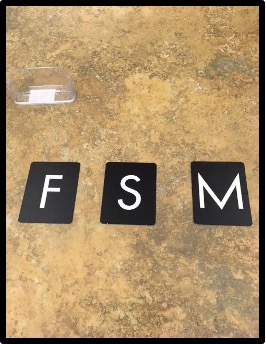
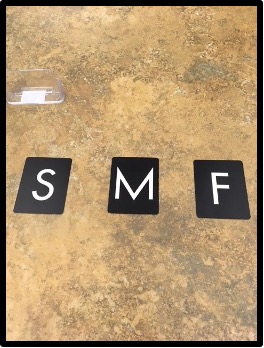
Moving from “in order” to “out of order”: Photo 1) Show me mmmm, show me ssss, show me fff. Photo 2) Close your eyes! (Mix up letters). Now show me mmm, ssss, ffff. Close your eyes again (Mix letters again.) Photo 3) Listen carefully because I am going to ask for them in a different way. Show me fff, show me sss, show me mmm.
Second Period extensions (Show me…)
- Ask the child to put the letters under, beside, on top, etc. of other things
- Ask children to pass the letters to each other, “Juan please give mmmm to Susan.”
- Put a few letters on a mat across the room. Say, “Bring me mmmmm.”
Third Period: What is this?
In the Third Period, we ask the child to identify the letter by sound and/or name. Play the “Knock, Knock” Game to make it more interesting.
Play the Knock, Knock Game
Steps:
- Place the 3 sandpaper letters face down on the side of the mat.
- Show the child how to ‘knock knock’ on the top of the pile.
- The child partner or adult says, “who’s there”?
- Child flips over the top card and names it.
- Adult may need to prompt, ‘what is it, what sound does it make”?
- Mix up letters again and repeat.
Additional extensions:
- Crayon Rubbings
- Sand Tray
- Tracing on Children’s Backs
- Child as Teacher
Sandpaper Letter and Letter Symbol Extensions for the Writing Center
